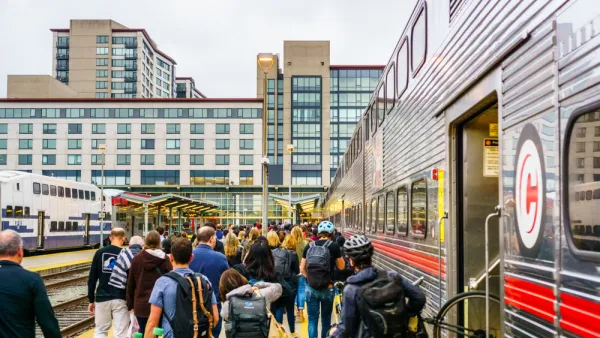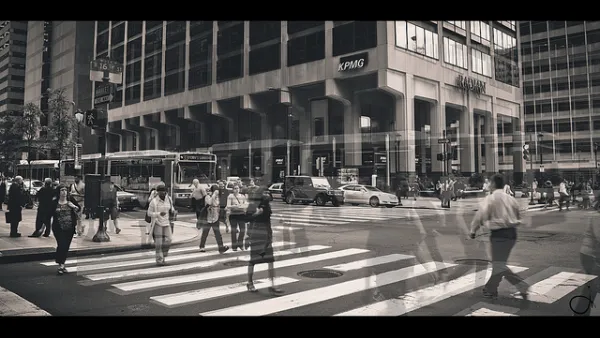Based on available data, working from home is likely to remain a popular option with a high percentage of workers, changing the ways and places Americans live, work, and travel.

Writing in the Washington Post, Andrew Van Dam analyzes the economic and demographic shifts caused by the rise of remote work. Although the rate of remote work peaked at the height of pandemic shutdowns, “it has since stabilized at an extraordinarily high level: Around a third of work was done remotely in the United States in 2021 and 2022, according to economists José María Barrero (Autonomous Technological Institute of Mexico), Nicholas Bloom (Stanford University) and Steven Davis (University of Chicago).”
According to Van Dam, remote work is having an impact in some unexpected industries. “The data hints that the real remote revolution is taking place not at tech giants but at firms like the Inside Out Co., an Illinois construction, roofing and painting outfit that has found it provides a competitive advantage.” After shifting to remote work and taking its systems into the digital space during the pandemic, the company realized it could now broaden its scope across the country. “A business that just two years ago was hyper-focused on the Chicago area now would see no problem hiring back-office personnel who could work remotely from anywhere in the country,” Van Dam writes.
The growth of remote work tracks with migration: “Notably, two of the counties with the most remote-eligible jobs, Manhattan (New York County) and San Francisco, experienced the fastest population loss of any county with more than 10,000 residents from 2020 to 2021” as people disperse to find more affordable housing or better amenities.
Understanding the full impact of these changes will require more data from federal agencies, Van Dam notes. “[U]ntil we have better federal data on who works remotely and where they do it, we can’t produce the detailed analyses necessary to understand the winners and losers of the remote-work revolution — and to deal with the inevitable fallout.”
FULL STORY: The remote work revolution is already reshaping America

National Parks Layoffs Will Cause Communities to Lose Billions
Thousands of essential park workers were laid off this week, just before the busy spring break season.

Retro-silient?: America’s First “Eco-burb,” The Woodlands Turns 50
A master-planned community north of Houston offers lessons on green infrastructure and resilient design, but falls short of its founder’s lofty affordability and walkability goals.

Delivering for America Plan Will Downgrade Mail Service in at Least 49.5 Percent of Zip Codes
Republican and Democrat lawmakers criticize the plan for its disproportionate negative impact on rural communities.

Test News Post 1
This is a summary

Test News Headline 46
Test for the image on the front page.

Balancing Bombs and Butterflies: How the National Guard Protects a Rare Species
The National Guard at Fort Indiantown Gap uses GIS technology and land management strategies to balance military training with conservation efforts, ensuring the survival of the rare eastern regal fritillary butterfly.
Urban Design for Planners 1: Software Tools
This six-course series explores essential urban design concepts using open source software and equips planners with the tools they need to participate fully in the urban design process.
Planning for Universal Design
Learn the tools for implementing Universal Design in planning regulations.
EMC Planning Group, Inc.
Planetizen
Planetizen
Mpact (formerly Rail~Volution)
Great Falls Development Authority, Inc.
HUDs Office of Policy Development and Research
NYU Wagner Graduate School of Public Service





























